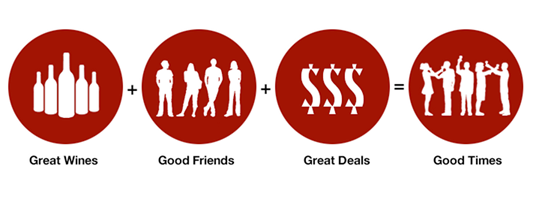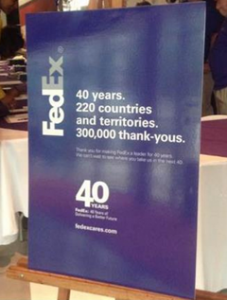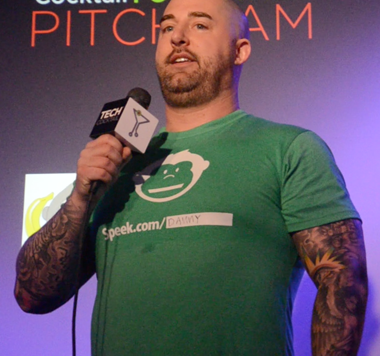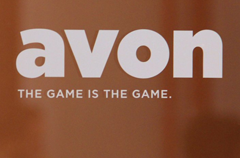 According to the founders of New York startup Split Bin, Chris “Hannibal” Fava and Todd “Niko” McCarthy, they’ve re-invented the wine startup.
According to the founders of New York startup Split Bin, Chris “Hannibal” Fava and Todd “Niko” McCarthy, they’ve re-invented the wine startup.
“Splitbin is the Wolverine of wine sale sites…in beast mode…on steroids…to the extreme. While other wine sites just sell assorted high price booze, we offer high quality, low cost wine in a way everyone can understand. Oh yea, we’re also the first wine site in the world to give you the choice to split the cost and buy with friends.” Fava told nibletz.com in an interview.
Essentially Splitbin wants to become the easiest way to buy win and have it delivered, whether you’re drinking alone or having an open house party.
One things for sure, judging by our interview with them, Splitbin has the fire to succeed (and probably attract Gary Vee, who may be just a tad crazier than them)
Check out the interview below.
 In layman’s terms, how does it work? (In other words how would you explain it to your grandmother)
In layman’s terms, how does it work? (In other words how would you explain it to your grandmother)
If you like wine, but get confused by the culture, and intimidated by high prices, then Splitbin is your horse. We offer affordable wine deals, delivered quickly, with no minimum order requirements. Since we are not, in principle, a “wine club”, we don’t require our Splitbuds to adhere to a buying program. Just log in, check out our new juice, and pick what you like, when you like.
Who are the founders and what are their backgrounds?
Our founder, Chris “Hannibal” Fava, an avid big game hunter, is always after the next animal ready to be taken down. After filling his study with boar and bear busts, he targeted the bloated wine industry and decided to start filling his wine cellar.
Todd “Niko” McCarthy, Splitbin’s CMO and resident chef/DJ, is into wine but also enjoy a nice bullfight on acid. Amateur Formula 1 racetracks in Eastern European capitals are where he finds his happy place. After reading Tim Ferriss’ “4 Hour Work Week” he dedicated himself to digital marketing…and to discovering the elusive 3 hour work week.
Part of our Shadow Ops team, Tom “Bootsy” Collins, is our enigmatic guiding light, a guru of sorts. When upright, you’ll usually find him ensconced in a Burmese jungle searching for rare snake wine, or fending off ivory poachers in Zimbabwe. Currently, his mission is to show wine producers of the world to a new audience, helping the otherwise shunned, marginalized, overlooked drinkers of the world discover great juice at exceptional value.
Where are you based?
Brooklyn, NY (aka Bucktown, USA)
What’s the startup scene/culture like where you’re based?
Ready to be crushed.
How did you come up with the idea for Splitbin?
We’ve lived in group houses and have gone/held our share of group dinners where one person gets stuck with the tab simply by being a good host. We could always split tabs at bars and restaurants, so why the hell couldn’t you do it online? We all liked to cook, eat, and drink together, but we wanted a way to make it easier to get together without one person having to buy everything. Living and working in cities also makes it harder to get to stores and learn about new wine, let alone carrying the damn stuff.
How did you come up with the name?
Have you ever seen the movie Face/Off? It’s like that. Except you Split the Bin.
What problem does Splitbin solve?
Global Warming and making sure mark-ass tricks pay for what they drink in groups.
What’s your secret sauce?
Oooohhhh, you’re dirty…we like that, but we’ll keep the answer clean. You can eat it with anything, but our secret sauce would be a beurre blanc with capers and tarragon. It’s almost like a hybrid Bearnaise and absolutely rocks with roasted salt potatoes or a nice fatty salmon. It’s actually something that is fun to mess around with at home, it just involves a bit of patience, and a shit ton of butter.
Are you bootstrapped or funded?
We like to consider ourselves strapped and sometimes we wear boots. But yeah, we haven’t taken any angel or VC clams yet.
What are some milestones you’ve achieved?
Doing the Seven Summits carrying a full case of Cabernet (without extra oxygen) was Bootsy’s major achievement of fall 2012. Getting our business up and running was a minor miracle…doing this interview with the fine folks at Nibletz sure counts as one
What’s your next milestone?
Getting every man, woman and child (over 21) hooked on wine.
What’s one challenge you’ve overcome in the startup process?
Figuring out you can’t easily build a website just because you know how to share google docs or have a great smile. Also, figuring out which growth driver is most efficient in our user acquisition strategy.
 Who are some of your mentors and business role models?
Who are some of your mentors and business role models?
Our role models are Dave Chappelle (post Africa), the dude that sold his picture app to facebook, Eric Ries and Zack Morris.
Our mentors include some highly experienced pros in the NYC advertising world (Woods Witt Dealy & Sons) as well as Neil Jacobs, who has provided invaluable startup legal counsel as we’ve gotten going.
What’s next for Splitbin?
First priority is bailing our CTO out of jail in Cancun then bussing him back to BK to complete our mobile app (Mexico is fun, but the dude needs to get cracking). It’s still in development, but this app is going to change the world. We are a national company, but have been pretty Beast Coast dominant since launching. We want to really focus on getting the word on Splitbin out to all our homies in the south, midwest and the Best Coast, letting them know that we’ve got the best wine deals going
Where can people find out more!
Check us out on Facebook/splitbin – we post deals, free mixtapes, and all sorts of tomfoolery to help you get through the day
You can find us tweeting trivia questions for wine deal discounts @splitbin or engaging in topical political discussions like #whatismetrobutt?
Ready for a glass of wine? Check out splitbin.com
 Eugene Chung took to the official Techstars blog to announce that this spring’s session at NY Techstars was by far the biggest applicant pool they had seen. Techstars NY received over 1700 applications from 420 cities, 66 countries.
Eugene Chung took to the official Techstars blog to announce that this spring’s session at NY Techstars was by far the biggest applicant pool they had seen. Techstars NY received over 1700 applications from 420 cities, 66 countries.



















